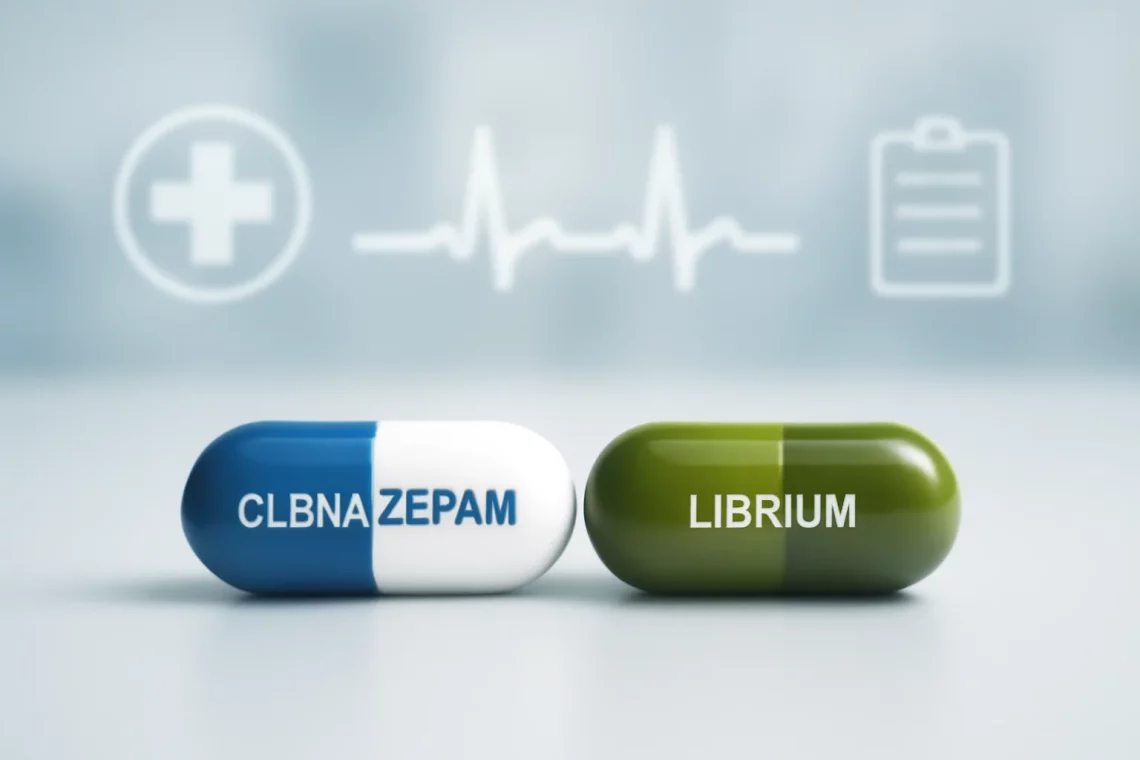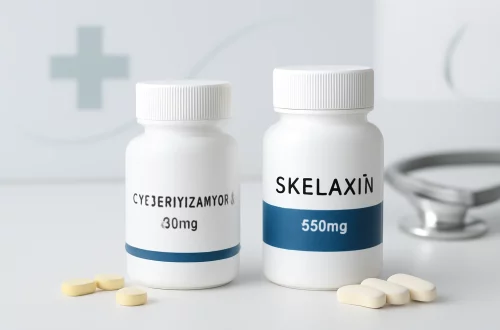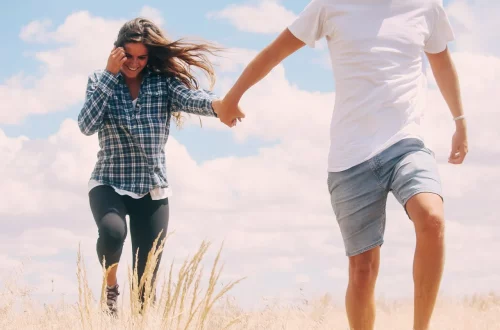-
Naltrexone vs Buprenorphine: Understanding Their Differences and Uses
Naltrexone and buprenorphine are two medications that have gained attention in the field of addiction treatment and pain management. Both drugs operate on the brain’s opioid receptors but do so in markedly different ways. Understanding these differences is crucial for healthcare providers, patients, and families navigating the complex landscape of opioid use disorder and chronic pain management. Naltrexone is primarily known for its role in treating alcohol and opioid dependence, as it can block the euphoric effects of these substances, thereby reducing cravings. On the other hand, buprenorphine is a partial opioid agonist that can alleviate withdrawal symptoms and cravings without producing the intense high associated with full agonists. This…
-
Clonazepam vs Librium: Key Differences and Uses Explained
Clonazepam and Librium are two medications that are commonly used to treat anxiety and other related disorders. Both belong to the class of drugs known as benzodiazepines, which work by affecting the central nervous system to produce a calming effect. Due to their similar classifications, many individuals often find themselves comparing these two medications when seeking relief from anxiety, panic disorders, or other conditions that require sedative effects. Understanding the nuances between Clonazepam and Librium can aid in making informed decisions about treatment options. Factors such as potency, duration of action, side effects, and the specific conditions each medication is prescribed for play a critical role in differentiating these drugs.…
-
Amlodipine vs Procardia: Key Differences and Similarities Explained
High blood pressure and related cardiovascular conditions are prevalent health issues that affect millions of people worldwide. As medical science evolves, various medications are developed to manage these conditions effectively. Among the most commonly prescribed drugs are Amlodipine and Procardia, both of which belong to a class of medications called calcium channel blockers. These drugs help relax blood vessels, making it easier for the heart to pump blood and thereby reducing blood pressure. Understanding the differences and similarities between Amlodipine and Procardia can empower patients to make informed decisions about their treatment options. Both medications have distinct mechanisms of action, side effects, and clinical applications. This nuanced understanding can not…
-
Loratadine vs Chlorpheniramine: Which Antihistamine is Better?
Allergies can be a significant nuisance for many individuals, leading to symptoms such as sneezing, runny nose, and itchy eyes. In an effort to combat these discomforts, various antihistamines have been developed to alleviate allergic reactions. Two common medications frequently discussed are loratadine and chlorpheniramine. Both of these drugs serve the primary purpose of relieving allergy symptoms, but they belong to different classes of antihistamines and exhibit distinct characteristics. Understanding the differences between loratadine and chlorpheniramine is essential for making informed decisions about allergy management. Factors such as efficacy, side effects, and duration of action can vary significantly between these two medications. By exploring their unique properties, individuals can better…
-
Metoprolol vs Toprol XL: Key Differences and Similarities Explained
Metoprolol and Toprol XL are frequently discussed in the context of cardiovascular health, particularly for individuals managing conditions like hypertension and heart disease. Both medications belong to a class of drugs known as beta-blockers, which work by blocking the effects of adrenaline on the heart and blood vessels. This action reduces heart rate, blood pressure, and strain on the heart, making these medications effective for various heart-related issues. The distinction between Metoprolol and Toprol XL often confuses patients and healthcare providers alike. While they share a common active ingredient, their formulations and dosing regimens can differ significantly. Understanding these differences is crucial for patients who are prescribed these medications, as…
-
Naproxen vs Anaprox: Key Differences and Similarities Explained
Naproxen and Anaprox are both nonsteroidal anti-inflammatory drugs (NSAIDs) primarily used to relieve pain and reduce inflammation. While they share a common active ingredient, their formulations and specific uses can differ. Understanding the nuances between these two medications is crucial for patients and healthcare providers alike. The choice between them can depend on several factors including the specific condition being treated, the desired duration of pain relief, and individual patient response. As we navigate the complexities of pain management, it’s essential to gain a comprehensive understanding of how these medications function, their potential side effects, and the circumstances under which one might be preferred over the other. The need for…
-
Hydrochlorothiazide vs Dyazide: Key Differences and Uses Explained
Hydrochlorothiazide and Dyazide are two medications often discussed in the context of managing hypertension and fluid retention. Both of these drugs belong to the class of thiazide diuretics, which are commonly prescribed for lowering blood pressure and reducing excess fluid in the body. While they share some similarities, they also possess distinct characteristics that can influence a healthcare provider’s choice when determining the most appropriate treatment for a patient. Understanding the nuances between Hydrochlorothiazide and Dyazide can be beneficial for patients, caregivers, and healthcare professionals alike. The choice of medication can depend on various factors, including the patient’s overall health, specific medical conditions, and the presence of other medications. Furthermore,…
-
Can You Safely Take Gabapentin with Tramadol Together?
Gabapentin and tramadol are medications commonly prescribed for the management of pain and certain neurological conditions. Gabapentin is primarily used to treat nerve pain and seizures, while tramadol is an opioid pain reliever that is effective for moderate to severe pain. Both medications work through different mechanisms in the body, which can sometimes lead to questions about their safety when taken together. When considering the simultaneous use of gabapentin and tramadol, it’s essential to understand the potential interactions and side effects that may arise. Each of these drugs has a unique profile, and their combined effects can vary from person to person. Patients must be aware of how these medications…
-
Can You Safely Take Gabapentin with Tramadol Together?
Gabapentin and tramadol are two medications commonly prescribed for various conditions, including nerve pain and anxiety. Understanding their individual effects, interactions, and potential side effects is crucial for anyone considering their simultaneous use. Gabapentin is primarily used to treat seizures and neuropathic pain, while tramadol is an opioid pain reliever that can help manage moderate to severe pain. The unique mechanisms of action for each medication mean that their combined use could have different implications for patients. As patients explore their treatment options, they may have questions about the safety of taking these medications together. The need for effective pain management is often urgent, and both gabapentin and tramadol can…
-
Can You Safely Combine Tramadol and Gabapentin for Pain Management?
Pain management is a critical aspect of healthcare, particularly for individuals suffering from chronic conditions. The experience of pain can significantly affect one’s quality of life, leading to a search for effective relief methods. Among the various medications available, Tramadol and Gabapentin are commonly prescribed to help alleviate pain. Each of these medications works in different ways, targeting different aspects of pain perception and response. Tramadol is an opioid pain reliever that acts on the brain to change how the body feels and responds to pain. It is often used for moderate to moderately severe pain. Gabapentin, on the other hand, is categorized as an anticonvulsant and is primarily used…





































